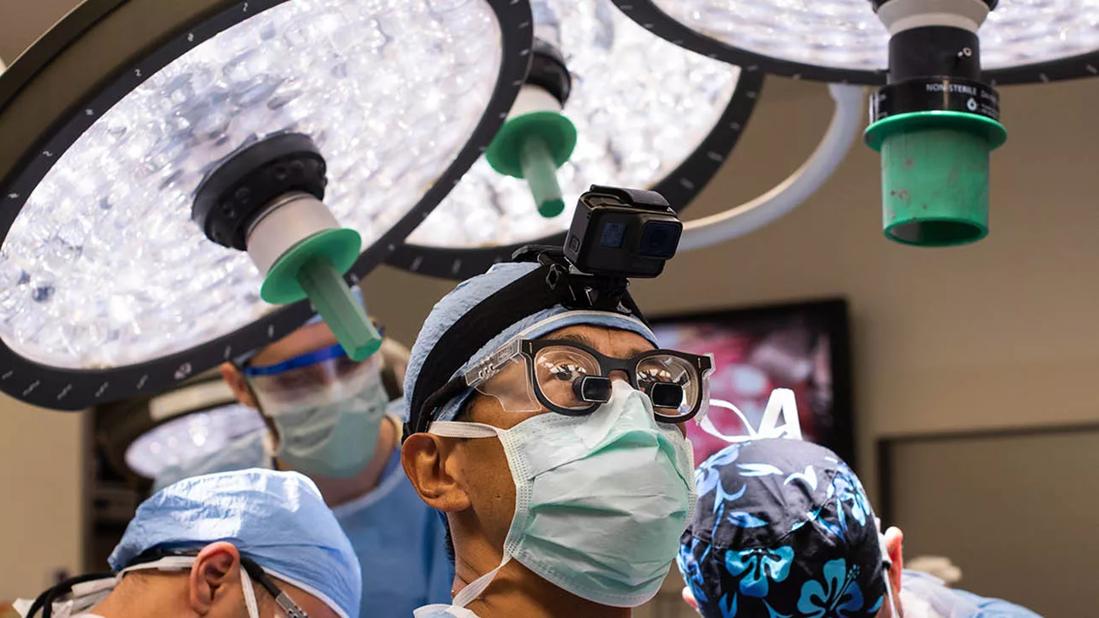COVID-19-free safety zones minimize contact with the virus

To shield solid-organ transplant patients and living donors from exposure to other patients or caregivers who might be positive for COVID-19, Cleveland Clinic has developed a protocol centered on housing these patients in designated COVID-19-free units.
Advertisement
Cleveland Clinic is a non-profit academic medical center. Advertising on our site helps support our mission. We do not endorse non-Cleveland Clinic products or services. Policy
“We wanted to establish a COVID-19-free environment for these vulnerable patients, who undergo major surgery and receive immunosuppressant drugs,” says Charles Miller, MD, Enterprise Director of Transplantation. “We felt this was necessary to maximize their safety.”
Safety is enhanced by forgoing visitors on the units, requiring caregivers to wear masks when interacting with patients and requiring patients to wear masks when leaving their room or unit for tests or procedures. COVID-19 testing is repeated periodically to ensure patients remain COVID-19-negative, as well as identify and separate any asymptomatic or COVID-19-positive patients.
Two nursing units and three intensive care units were selected as transplant-focused safety zones, informally called “cold zones.” Each has an adjacent sister unit.
Hospital transfers entering Cleveland Clinic with a negative COVID-19 test are admitted to the appropriate sister unit, isolated and re-tested. With a negative test, they are admitted to the adjacent transplant safety unit.
Pre- and post-transplant patients coming directly from home enter a sister unit until a COVID-19 test can be obtained. They are subsequently moved into the appropriate transplant safety unit.
When a donor organ is identified, a patient waiting in-house must have a negative COVID-19 test within 72 hours to be transplanted, or the test is repeated. This prevents a COVID-19-positive patient from entering the operating room.
According to Dr. Miller, the protocol is working very well.
Advertisement
“When we were just starting this protocol in mid-April, we had a patient in-house waiting for a liver. When we were notified of an available organ, we tested the patient, and he was positive. The organ was released, so it could be transplanted into another candidate, and the patient was moved to a COVID-19-positive ICU,” he recalls.
“The following week, he had two negative COVID-19 tests. A few days later, he received a liver and is doing well.”
Similar to the steps taken to shield solid-organ recipients from harm, protocols were established to ensure cadaver organs selected for transplantation and living donors are virus-free.
When the pandemic started, Ohio organ procurement agencies were sending COVID-19 tests out of state. The cumbersome process took as long as four days, causing some families to withdraw consent to donate. Cleveland Clinic stepped in to expedite the process.
“We asked our laboratory if they would arrange for rapid testing, so we could make sure all solid-organ donors have been tested. They immediately agreed and got it done,” says Dr. Miller.
Protecting living donors from COVID-19 infection was more problematic. When the seriousness of COVID-19 became apparent in mid-March, Cleveland Clinic responded to the State’s request to suspend all non-emergency procedures, which included living donor transplants.
“At that point, we had no ability to test donors or recipients, and we felt we would be putting healthy volunteer donors at unnecessary risk,” says Dr. Miller.
Advertisement
While COVID-19 testing was being put in place, and protocols for solid-organ transplantation and resuming living-donor transplantation were being written, living donors continued to be evaluated and recipients listed for transplantation.
“Ultimately, the creation of transplant safety zones led to our ability to reinstate living donor transplants, with the first one performed on May 14,” says Dr. Miller.
Despite the uncertainty surrounding COVID-19, and the pause in doing living-donor cases, transplant volumes at Cleveland Clinic are ahead of last year.
“We are committed to continuing our transplant services in the safest possible way,” he says.
Advertisement
Advertisement

Patients report improved sense of smell and taste

Clinicians who are accustomed to uncertainty can do well by patients

Unique skin changes can occur after infection or vaccine

Cleveland Clinic analysis suggests that obtaining care for the virus might reveal a previously undiagnosed condition

As the pandemic evolves, rheumatologists must continue to be mindful of most vulnerable patients

Early results suggest positive outcomes from COVID-19 PrEP treatment

Could the virus have caused the condition or triggered previously undiagnosed disease?

Five categories of cutaneous abnormalities are associated with COVID-19